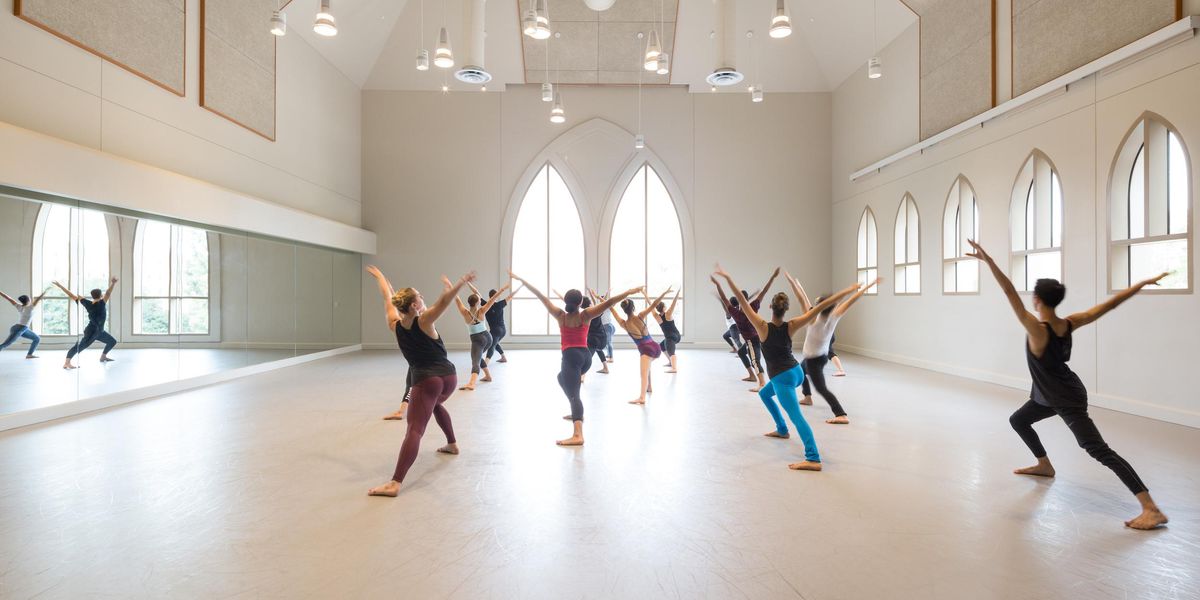Dance Matters: The A.W.A.R.D. Show!
Where fostering discussion trumps the $10,000 prize
On a Thursday in June, a sold-out crowd filed into New York’s Joyce SoHo. In each person’s hands: a ballot, a pencil, and the right to vote. Backstage, four up-and-coming choreographers were getting ready for Round One of the fourth annual A.W.A.R.D. Show. Over three nights, 12 companies would perform, and the audience favorite from each program would move onto the finals. The stakes? A $10,000 cash prize, with $1,000 for each runner-up.
It might sound like So You Think You Can Dance for the blackbox. But The A.W.A.R.D. Show—founded by choreographer Neta Pulvermacher in 2006 and now produced nationally by the Joyce Theater Foundation—is more discussion forum than cutthroat, fan-crazed contest. The acronym, Artists With Audiences Responding to Dance, sums it up. Artists (mostly younger emerging ones) perform; audiences cast their votes, along with anonymous written comments; and then, in a moderated dialogue, everyone talks about the work.
With the money in the hands of the viewers (at least partly—a panel of experts weighs in on the final night), The A.W.A.R.D. Show “talkbacks” tend to be more animated than your average post-performance Q&A. “I wanted to get the audience charged and empowered,” says Pulvermacher, who hopes to foster a “lab-like” setting for rigorous conversation. “When you give people the rights and responsibilities of voting, they pay attention.” While many are there to support friends, all are encouraged to vote objectively using the “P.O.E.M.” criteria outlined in their programs: Potential, Originality, Execution, and Merit.
The concept emerged in 2004, when Pulvermacher got an email from Scott Kasen, a hedge fund manager looking to support modern dance at a grassroots level. Kasen was a fan of Pulvermacher’s Dance Conversations at the Flea Theater, a series for audience-artist exchange. “I was extremely suspicious to say the least,” Pulvermacher laughs. “Where I come from, nobody offers out of the blue to support individual artists.” Kasen suggested expanding Dance Conversations into a competition; the $10,000 prize, for the creation of a new work, would come from him. With presenting interest from the Joyce, The A.W.A.R.D. Show was born.
Through funding from the Boeing Company, the show went national this year, with similar events in Chicago, Seattle, and this month, Philadelphia. “At a time when most nonprofits are contracting, we’re expanding,” says Linda Shelton, executive director of the Joyce. “And we hope to expand the event further. I’ve been approached by presenters of all kinds looking to try this.”
The demand isn’t surprising in a field where claims of “I don’t get it” are all too frequent. “Many people don’t even go to a performance because they’re worried they won’t understand it,” says Shelton. “Or if they do go, they won’t talk about it, saying, ‘Oh, I’m not gonna ask because it’s a dumb question.’ ” But at The A.W.A.R.D. Show, she observes, audiences have “more of an appetite” for conversation.
Artists notice the richness of the dialogue too. “Sometimes in a Q&A, it feels like everyone’s hunting for a prescribed answer,” says Shannon Gillen of Doorknob Company, one of this year’s New York finalists. “This experience pushed through that and got at some truth. Really what do you make? Why do you want to make it?”
Some artists were initially wary of the competitive format. “It’s a small dance community, and I don’t like feeling in direct competition with my peers,” says Monica Bill Barnes, also a New York finalist. But, she remarked at the finals, “It hasn’t felt like a competitive environment. Everyone has been so supportive. It’s just another opportunity to present our work.”




